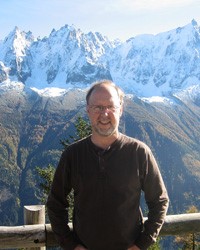Dobrin Lecture
- Maximum of 50 students allowed to present posters.
- Poster Dimensions: Landscape orientation, width 46” x height 35”
- Poster Abstract Submission: Submit your Poster abstract here. This counts as your RSVP; please do not RSVP again using the second form listed below.
- Students presenting posters must:
a) Arrive by 4:15pm to mount posters.
b) Stay for the entire lecture; if absent, prizes will be given to the next ranked student.
c) Dismount posters at 8pm when the lecture is over. - Students not presenting posters: Please RSVP here. Admission is free.
Poster Deadline: Wednesday, January 29, 2020, 11:59 p.m.
Cancellation Deadline: Please email Kirene Ramesar by Friday, January 31, 2020 at 4pm.
Prizes
- 1st Place: $800
- 2nd Place: $600 each for 2 winners
- 3rd Place: $300 each for 2 winners
Please join us at the
26th Annual Milton B. Dobrin Lecture
February 12, 2020
Seismic Exploration on Mars

Admission is free. Please RSVP here.

Abstract for 'Seismic Exploration on Mars':
The InSight mission landed on Mars in November 2018 carrying a scientific payload focused on the exploration of the deep interior of the planet. It completed installation and commissioning of a seismometer (SEIS) on the surface about three months later. In addition to SEIS, InSight carries a diverse geophysical observatory including a heat flow and sub-surface physical properties experiment (HP 3), a geodesy (planetary rotation dynamics) experiment (RISE), and a suite of environmental sensors measuring the magnetic field and atmospheric temperature, pressure and wind (APSS). SEIS consists of a 6-axis instrument -- 3-axis Very-Broad-Band (VBB; 1 mHz to 10 Hz) and 3-axis Short Period (SP; 10 mHz to 100 Hz) -- mounted on a leveling system, protected by a wind shield and three stages of thermal insulation, and connected by a tether to the instrument electronics in the lander, roughly 2 meters away. During the past year, SEIS has been providing near-continuous seismic monitoring of Mars, with background noise levels orders of magnitude lower than any achievable on the Earth, and the Mars seismic catalog already contains several hundred events. In this talk, Dr. Banerdt will describe the InSight mission and discuss its current status and what we have learned thus far from analysis of Mars seismic data.
Biography:
Bruce Banerdt is a Principal Research Scientist at JPL, where he has worked since 1977. He received both his B.S. (Physics, 1975) and Ph.D. (Geological Sciences, 1983) degrees from the University of Southern California.
For three decades, Dr. Banerdt has been a leading proponent for putting seismometers on other planets and moons to study their interior structure and evolution. Prior to the InSight project, he served as an investigator on many NASA planetary missions, including the Mars Exploration Rover project (with the Spirit and Opportunity rovers), the NetLander mission (whose aim was to put a network of seismometers on Mars), and the Mars Orbiter Laser Altimeter instrument (MOLA) on the Mars Global Surveyor mission, to highlight a few. Dr. Banerdt has authored more than 90 papers and book chapters, and served the National Research Council’s Committee for Planetary and Lunar Exploration (COMPLEX). He has been honored by many awards, the most recent one being the NASA Outstanding Public Leadership Medal (2019).